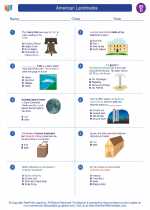What is Vegetation?
Vegetation refers to the plant life that covers a particular area. It includes a variety of plant species such as trees, shrubs, grasses, and other forms of plant life.
Importance of Vegetation
1. Habitat for Animals: Vegetation provides food and shelter for a wide variety of animal species.
2. Climate Regulation: Plants help regulate the climate by absorbing carbon dioxide and releasing oxygen through the process of photosynthesis.
3. Biodiversity: Vegetation contributes to the overall biodiversity of an area, supporting a wide range of plant and animal species.
4. Soil Protection: Plant roots help prevent soil erosion and maintain the integrity of the soil.
Types of Vegetation
1. Forests: Large areas covered with trees and undergrowth, such as tropical rainforests, temperate forests, and boreal forests.
2. Grasslands: Areas dominated by grasses and other herbaceous plants, including prairies, savannas, and steppes.
3. Deserts: Vegetation in arid regions adapted to survive with limited water, including cacti, succulents, and other drought-resistant plants.
4. Wetlands: Areas with water-saturated soil that support unique vegetation adapted to wet conditions, such as marshes, swamps, and bogs.
Factors Affecting Vegetation
1. Climate: Temperature, precipitation, and sunlight influence the types of vegetation that can thrive in a particular area.
2. Soil: Soil composition, pH, and drainage affect the types of plants that can grow in a specific location.
3. Human Impact: Human activities such as deforestation, urbanization, and agriculture can significantly alter natural vegetation patterns.
.◂Social Studies Worksheets and Study Guides Fourth Grade. American Landmarks

 Worksheet/Answer key
Worksheet/Answer key
 Worksheet/Answer key
Worksheet/Answer key
 Worksheet/Answer key
Worksheet/Answer key
